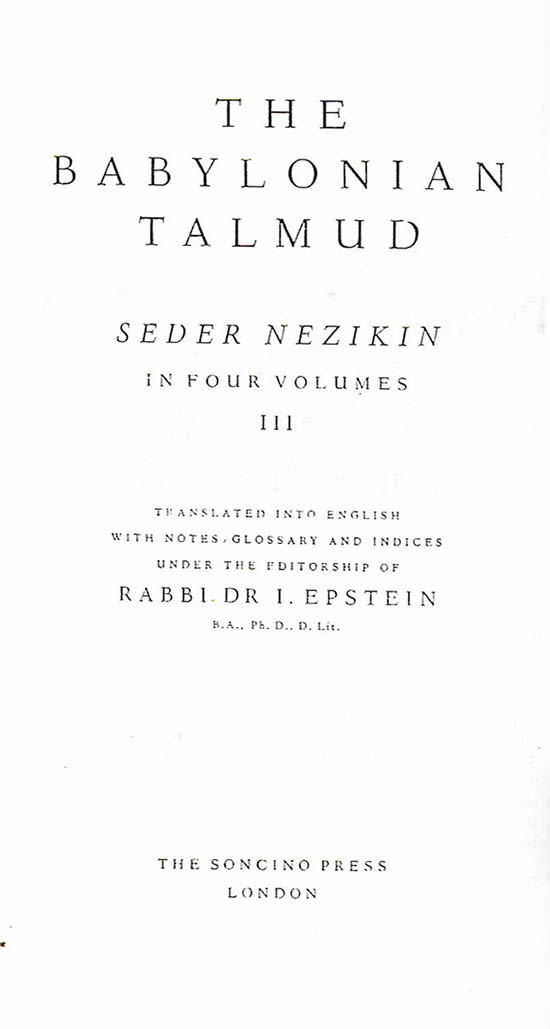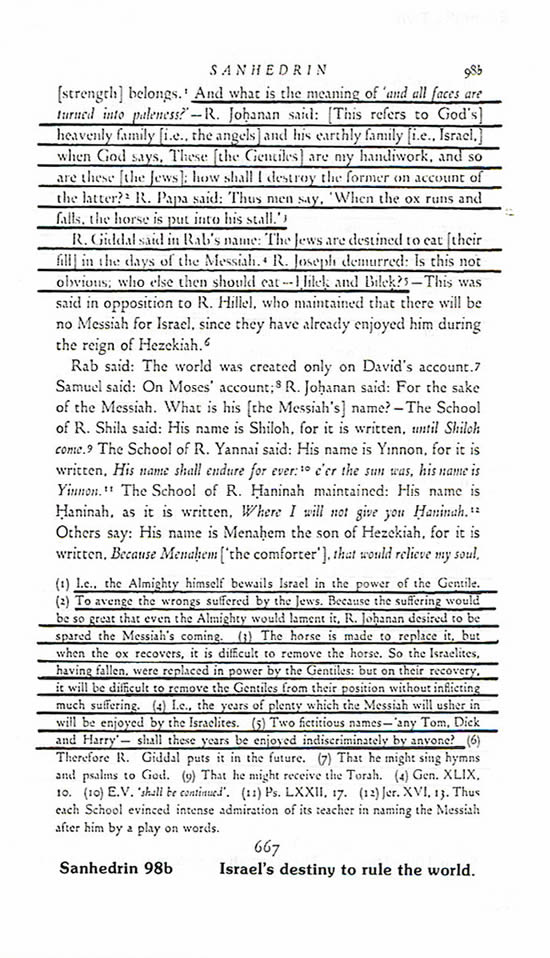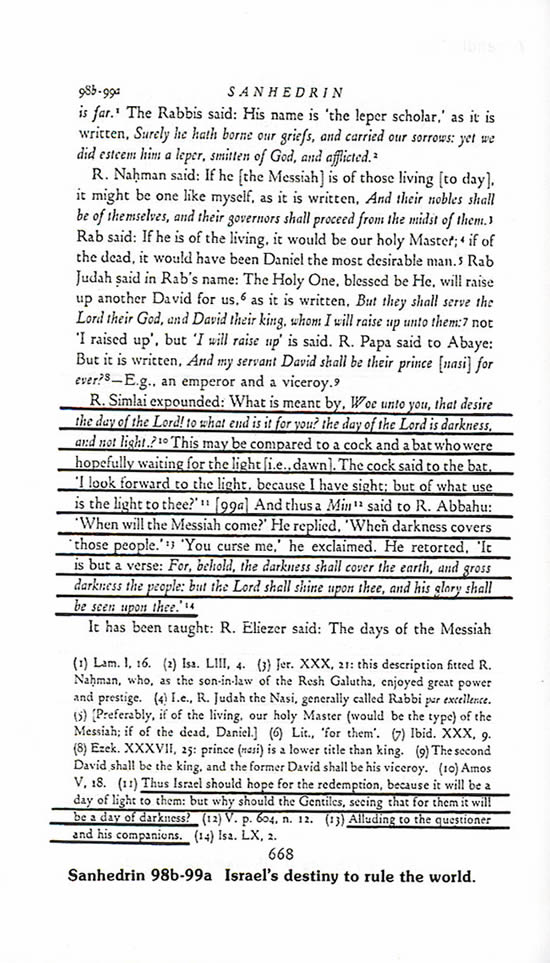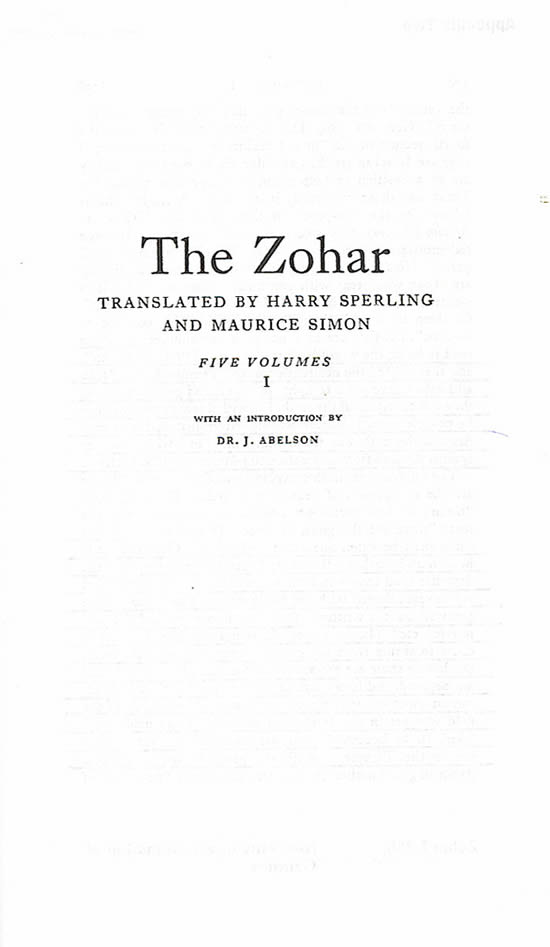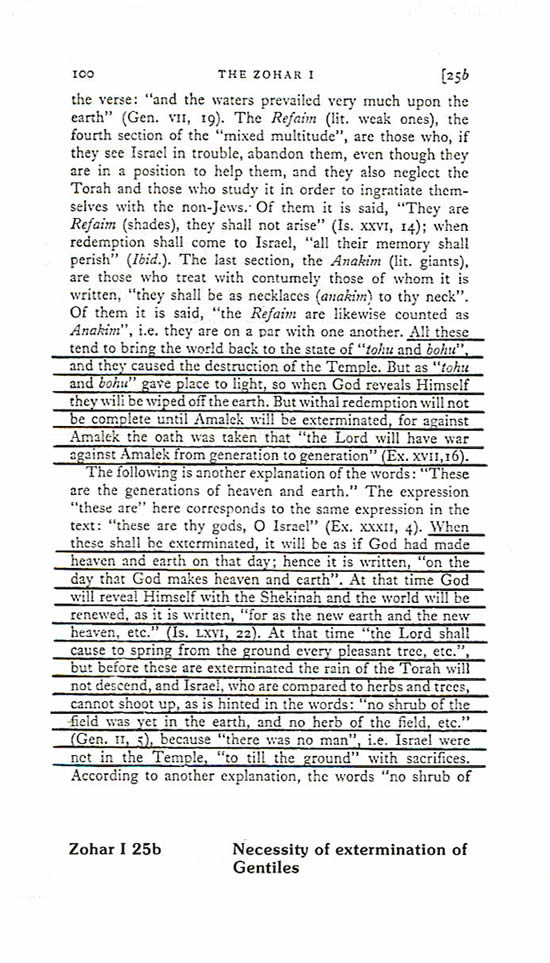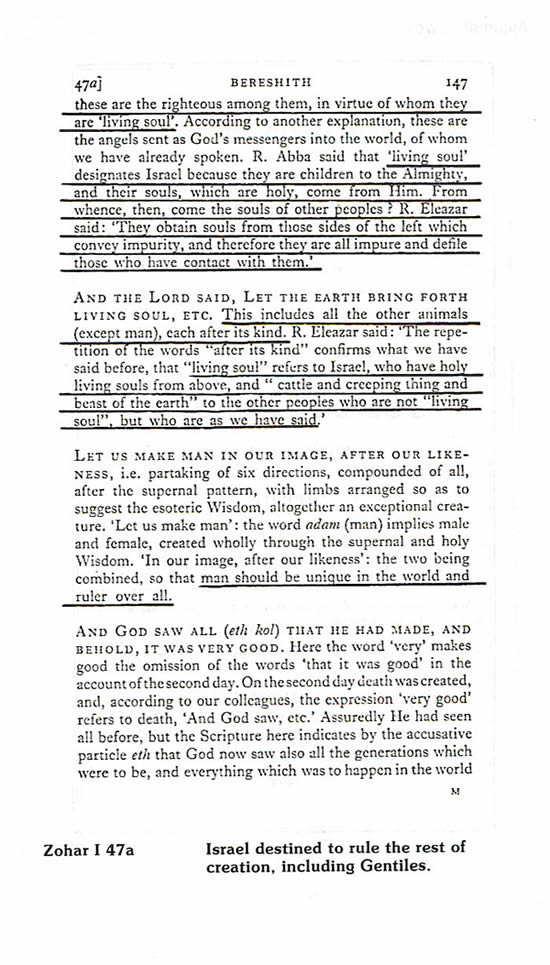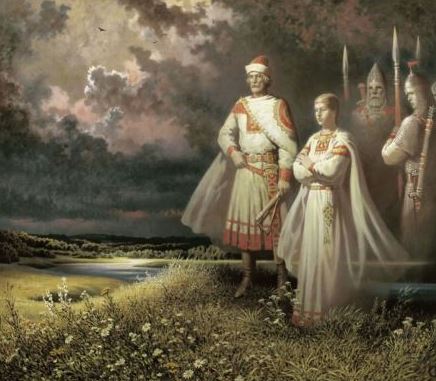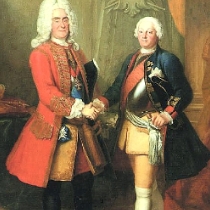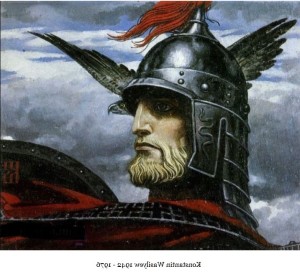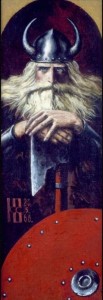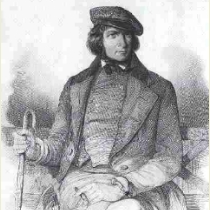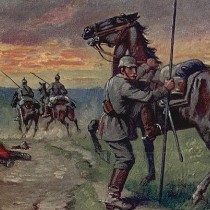Kol Nidre: The Core of Yom Kippur
SEPTEMBER 13, 2013 AT 7:44 AM
Dr. David Duke: The entire Jewish world is currently celebrating Yom Kippur, or the “Day of Atonement”—but as usual, the Jewish Supremacist controlled media ignores the underlying message of the first and most important part of this “celebration”: an undertaking to renounce all vows and undertakings made over the next 12 months.
This incredible fact is not even secret and openly admitted to by Jewish sources. The famous Jewish defector, Benjamin Freedman, gave a speech (see below) in which he explained the outline of the Kol Nidre prayer’s meaning.
Before sunset on the eve of Yom Kippur, in all synagogues, the “Ark” (in which the Jewish holy books are contained) is opened and two people take from it two Torah scrolls. Then they take their places, one on each side of the cantor, and the three (symbolizing a Beth Din or rabbinical court) recite the following:
“”By the authority of the Court on High and by authority of the court down here, by the permission of One Who Is Everywhere and by the permission of this congregation, we hold it lawful to pray with sinners.”
The cantor then chants the passage beginning with the words Kol Nidre and repeats three times the following words (Nusach Ashkenaz):
“All [personal] vows we are likely to make, all [personal] oaths and pledges we are likely to take between this Yom Kippur and the next Yom Kippur, we publicly renounce. Let them all be relinquished and abandoned, null and void, neither firm nor established. Let our [personal] vows, pledges and oaths be considered neither vows nor pledges nor oaths.”
The leader and congregation say together three times, “The Lord said, ‘I pardon them according to your words.’” The Torah scrolls are then replaced, and the customary evening service begins.
All Jewish encyclopedias and authoritative works on Kol Nidre always claimed that this is not meant to say that all vows to Gentiles can be broken—but it is impossible to see how otherwise this prayer could be interpreted.
The Jewish Supremacists claim that the Kol Nidre prayer “only” applies to breaking vows to oneself or to God.
For example, the about.com Judaism site says that “Kol Nidrei literally means ‘All Vows.’ It asks God to annul vows we may make (to God) during the coming year, either innocently or under duress.”
However, in other placed, the Talmud frequently says Gentiles may be deceived and defrauded. For example, the Talmud says Gentiles can be deprived of justice (Baba Kama, 113a), and can be cheated (BK, 113b).
The Talmud also says that Gentiles are animals (Iore Deah 148, 12 Hagah), may be killed (Sanhedrin 59a, Choschen Hamischpat 425.5, Abodah Zarah 26b), can be led to death or not saved from death (Choschen Ham. 425.5, Iore Deah 158).
In this light, non-Jews should be aware that the Yom Kippur celebrations have a very different meaning to Jewish Supremacists than that portrayed by the Zio-media.
http://davidduke.com/kol-nidre-the-core-of-yom-kippur/
*****
Jewish Hatred of Non-Jews as Expressed in the Talmud
MARCH 8, 2012 AT 10:58 AM
Dr. David Duke
The never-ending Jewish extremist hatred of Gentiles lies, as Professor Kevin McDonald has pointed out, in the evolutionary psychology of Jews which is the product of both a founder-genetic effect and the racial religion which is Judaism.
A small selection of quotations from the Talmud, which is the ultimate source of Jewish morality, for believers and non-believing Jews alike, illustrates in detail what extremist Jews actually think about non-Jews.
It is important to note that these quotes refer to all non-Jews (and not just Europeans or European-Americans, although the hatred is direct specifically directed against those groups), and is an indication of how extremist Jews view all people of the world:
“The Jews are called human beings, but the non-Jews are not humans. They are beasts.”
Talmud: Baba mezia, 114b
“The Akum (non-Jew) is like a dog. Yes, the scripture teaches to honor the dog more than the non-Jew.”
Ereget Raschi Erod. 22 30
“Even though God created the non-Jew they are still animals in human form. It is not becoming for a Jew to be served by an animal. Therefore he will be served by animals in human form.”
Midrasch Talpioth, p. 255, Warsaw 1855
“A pregnant non-Jew is no better than a pregnant animal.”
Coschen hamischpat 405
“The souls of non-Jews come from impure sprits and are called pigs.”
Jalkut Rubeni gadol 12b
“Although the non-Jew has the same body structure as the Jew, they compare with the Jew like a monkey to a human.”
Schene luchoth haberith, p. 250 b
“If you eat with a Gentile, it is the same as eating with a dog.”
Tosapoth, Jebamoth 94b
“If a Jew has a non-Jewish servant or maid who dies, one should not express sympathy to the Jew. You should tell the Jew: “God will replace ‘your loss’, just as if one of his oxen or asses had died”.”
Jore dea 377, 1
“Sexual intercourse between Gentiles is like intercourse between animals.”
Talmud Sanhedrin 74b
“It is permitted to take the body and the life of a Gentile.”
Sepher ikkarim III c 25
“It is the law to kill anyone who denies the Torah. The Christians belong to the denying ones of the Torah.”
Coschen hamischpat 425 Hagah 425. 5
“A heretic Gentile you may kill outright with your own hands.”
Talmud, Abodah Zara, 4b
“Every Jew, who spills the blood of the godless (non-Jews), is doing the same as making a sacrifice to God.”
Talmud: Bammidber raba c 21 & Jalkut 772
http://davidduke.com/jewish-hatred-of-non-jews-as-expressed-in-the-talmud/
*****
The Talmudic Roots of Jewish Supremacism by Dr. David Duke
OCTOBER 4, 2013 AT 9:56 AM
“When I first read extensive sections of the Talmud, even with the Jewish published translations in front of me, I did not want to believe they were authentic.
I approached another Jewish acquaintance, Mark Cohen, and gave him a page of these quotations. He seemed equally upset by them. By the look on his face, I knew instantly that he was completely unfamiliar (and unsympathetic) with this Talmudic writ. He offered to ask his rabbi about their authenticity. The rabbi confirmed that the quotations were genuine but claimed that those views were not currently held by most Jews of today.
I willingly believed this, and I still believe it is true of the average Jew. At the same time, however, knowing that such passages existed helped me to understand why there has been so much anti-Jewish sentiment over the centuries.”
Powerful and enigmatic, intelligent and creative, idealistic on the one hand and materialistic on the other, the Jewish people have always fascinated me. Few teenagers growing up in the middle 1960s, as I did, could have avoided acquiring a positive image of Israel and the Jewish people. Because of my years of Sunday school, my perception of the Jews was even more idealized than most. I was 11 years old when I saw the classic movie, Exodus.80 It made such an enduring impression on me that for a few months its beautiful theme song became my favorite, one that I would often hum or sing.
I remember an episode of embarrassment when my sister and her teenage friends stumbled upon me loudly singing the stirring words, “This land is mine, God gave this land to me.” Heroic Israel inspired me. It was as if the Israelites of the Bible had transported themselves to modern times to live out their Old Testament adventures again. The televised image of Israel strongly reinforced my acceptance of the idea that Gentile intolerance had caused every historical conflict with Jews.
After I had discovered the extensive Jewish leadership of early Communism, which I had hoped was an uncharacteristic blight on Jewish history, I began to ask questions one dared not ask in polite society about this interesting people and religion. I had read about the many persecutions of the Jews throughout history, including their great suffering now called the Holocaust (in the mid-60s that term had not yet been appropriated by the Jews to apply exclusively to their sufferings during the Second World War — holocaust merely means, as it always has, large scale destruction, especially by fire).
Mark Twain wrote, “Every nation hates each other, but they all hate the Jew.” Somehow I found the impertinence to ask why. In a historical context, almost every major nation of Europe had expelled them in the past, some repeatedly, after renewed waves of Jewish immigration. What was it, I wondered, about the Jewish people, that inspired such hatred?
Normally, when we study historical conflicts between nations or peoples, we do it dispassionately. For instance, in examining any war from long ago, we list as objectively as possible, the grievances and rationales of the opposing sides. When studying the War for Southern Independence, every American school child learns the Southern arguments for secession and the Northern arguments for forced union. In contrast, when studying the many historical disputes between the Jewish people and others, only the Jewish point of view is acceptable.
In early 1995, Congressman Newt Gingrich, Speaker of the House, fired his newly appointed congressional librarian, Christina Jeffrey.81
He fired her for having once suggested that history students, when studying the Holocaust, should also study the German point of view on the subject. She was fired in spite of her high standing in her profession and notwithstanding her long and cozy relations with the powerful Jewish ADL (Anti-Defamation League of B’nai B’rith). The very suggestion that there could be another side to any issue affecting Jews is decried as “anti-Semitic.” In both the entertainment and news media, the only permissible opinion is that Jews are always innocent victims persecuted by intolerant Christians and other “anti-Semites.” Maybe they were always innocent, and all the other peoples of the world were always unjust, I thought. But they weren’t so innocent in the Russian Revolution. I realized I could not evaluate the issue fairly until I had read about both sides.
Are Jews a Race?…They Certainly Think So!
One of the first things I discovered that is that while Gentiles who call the Jews a “race” are condemned, Jewish leaders have for centuries routinely called themselves a race. The leader of American Jewry in the 1930s, Rabbi Stephen F. Wise, said it succinctly in this dramatic statement,
“Hitler was right in one thing. He calls the Jewish people a race and we are a race.”82
Right up to the present day, there are many statements illustrating how Jewish leaders matter-of-factly view themselves not just as a religion, but as an identifiable race, genetically distinguishable from other peoples.
The former Israeli Prime minister, Benjamin Netanyahu, speaking to Jewish group in southern California said:
“If Israel had not come into existence after World War II then I am certain the Jewish race wouldn’t have survived…I stand before you and say you must strengthen your commitment to Israel.”83
An editorial entitled “Some Other Race” in the New York weekly Forward (A very prestigious Jewish publication) urges Jews to list themselves on the U.S. Government census form as arace. It goes on to suggest: “… On question eight [of the form, which asks about race], you might consider doing what more than one member of our redaktzia [editorial staff] has done: checking the box ‘some other race’ and writing in the word ‘Jew’.”84
Charles Bronfman, a main sponsor of the $210 million “Birthright Israel,” an organization specifically committed to preventing inter-marriage between Jews and Gentiles, expressed the need to preserve
the Jewish genetic character as expressed in the Jewish DNA. Bronfman is brother of Edgar Bronfman, Sr., president of the World Jewish Congress. He said,
“…you’re losing a lot — losing the kind of feeling you have when you know [that] throughout the world there are people who somehow or other have the same kind of DNA that you have.”85
Imagine for a moment if President George Bush would speak to a group of White college students and tell them how great it is for them know that others in the world share their White DNA, and that they should not lose it by intermarrying with other races. Bush could live to 100 years old and still never live down a remark like that!
During his campaign for President in 2000, Bush spoke before dozens of Jewish organizations and Synagogues that oppose inter-marriage between Jews and non-Jews. The media only had praise for those appearances. In contrast, Bush faced universal criticism by the Jewish media by simply speaking at a conservative Christian university (Bob Jones University) that quietly opposes racial intermarriage. After the media unleashed a storm of criticism, Bush had to quickly apologize and then passionately condemn Bob Jones University for its position. Of course, within a few days, Bush was again speaking before many Jewish groups that stridently oppose intermarriage, yet no one in the media dared object to these appearances, or to even point out this blatant double standard.
Judaism Views the Bible as Racial Supremacism
Looking for answers to the Jewish view on race, I returned to where I had first learned my respect for the Jews: in the Holy Bible. I went back and reread the Old Testament, paying close attention to the relationships between Jews and non-Jews. In contrast to the universalism of the New Testament, the Old Testament is extremely ethnocentric. It repeatedly identifies the Israelites as a “special people,” or a “Chosen People,” and it painstakingly traces the genealogical descent of the Children of Israel. Many thought-provoking passages forbid the intermarriage of Jews and other tribes. In the book of Exodus, Moses responds to Israelites who had sexual relations with Moabite women by ordering that the Moabites be executed. In Ezra, God commanded those who married non-Israelites to cast off their wives and even the children of such unions.86 Some of the bloodiest writings I have ever read detailed the Jewish people’s annihilation of their tribal enemies.
The massacres of Canaanites, Jacobites, Philistines, Egyptians, and dozens of other peoples are gruesomely recorded in the Bible. In today’s terminology, we describe the slaughter of entire peoples as genocide. Old Testament Jews spared neither men, women, children
or even the animals and pets of their enemies.87 The following are just a few among dozens of similar passages found in the Old Testament:
And they utterly destroyed all that was in the city, both man and woman, young and old, and ox, and sheep, and ass, with the edge of the sword . . . (Joshua 6:21)88
Then Horam, king of Gezer, came to help Lachish; and Joshua smote him and all his people, until he had left him none remaining.
And they took Eglon, and smote it with the edge of the sword, and all the souls that were therein. (Joshua 10:32-34)89
And they took Hebron, and smote it with the edge of the sword, and the king thereof, and all the cities thereof, and the souls that were therein; he left none remaining. (Joshua 10:37)90
For the indignation of the Lord is upon all nations, and His fury upon all their armies: he hath utterly destroyed them, He hath delivered them to the slaughter.
Their slain also shall be cast out, and their stink shall come up out of their carcasses, and the mountains shall be melted in their blood. (Isaiah 34:2-3)91
But in the cities of these peoples that the Lord your God gives you for an inheritance, you shall save alive nothing that breathes, (Deuteronomy 20:16)92
As a Christian, I could not explain what appeared to be celebrations of genocide. I acknowledged that God is unfathomable and unknowable. However, I could not help but have sympathy for those who where massacred, including thousands of innocent men, women and children. It is easy to imagine how the few who survived those bloody, merciless massacres felt about the “Jews.” Of course, the Jews were not unique in their pursuit of ethnic cleansing; many other early peoples had committed genocide on their enemies.
With the coming of Jesus Christ and his advocacy of love and kindness as recorded in the New Testament, the Old Testament advocacy and record of genocide is little recollected by modern churches. When a modern Christian stumbles across passages of the Old Testament condoning genocide, he usually dismisses them as the sad happenings of a remote biblical era, one now mitigated with the New Covenant of love that Christ brings to those who accept his message.
The Israelite record on racial integrity and supremacy is quite clear:
Neither shall thou make marriages with them; their daughter thou shalt not give unto his son, nor his daughter shalt thou take unto thy son. (Deuteronomy 7:2-3)93
. . . For thou art a holy people unto the Lord Thy God: the Lord Thy God has chosen thee to a special people unto himself, above all people that are on the face of the earth. (Deuteronomy 7:6)94
Now therefore give not your daughters unto their sons, neither take their daughters unto your sons, nor seek their peace or their wealth for ever, that ye may be strong and eat of the good of the land, and leave it for an inheritance to your children for ever. (Ezra 9:12)95
Members of racial groups might argue about their comparative history, or abilities, or spirituality. But to suggest that God favors one people over all others — even to the point of advocating and condoning genocide to make way for the “Chosen”? Certainly, that must be the apex of racial supremacy.
Modern Christianity deals with the ethnocentric and genocidal parts of the Old Testament by focusing on the loving aspects of the New Testament. One example is the way that Jesus Christ reversed Old Testament law such as “An eye for an eye and a tooth for a tooth,” to “turn the other cheek.” The Jewish religion, however, had no comparable figure in its history to moderate the extreme ethnocentrism of the Old Testament. Perhaps the Jewish teacher who offered the greatest moderation toward Gentiles was Maimonides, considered by most Jews as the foremost figure of European Judaism. Even Maimonides decreed that Jewish physicians should not save the life of a Christian unless not saving him would “cause the spread of hostility against the Jews.”96
The early spread of Christianity by the Apostle Paul encouraged Christians to become more tolerant of different ethnic groups. Paul himself was a Jewish Pharisee who converted to Christianity and preached much of his life to Gentiles of diverse nationalities. The Christian faith had intolerance for other beliefs and other Gods, but no bias against other tribes. Evangelists of the ancient world themselves came from assorted peoples and preached across the known world. Of course, Christians could and often did harbor xenophobic tendencies, but their nationalistic or ethnocentric attitudes found their origins in their own cultures, not in the teachings of the New Testament. The book of Galatians makes the point quite well that the chosen people, “neither Jew or Greek,” are now those who accept the salvation of Jesus Christ.97 Salvation in the ancient world became based upon acceptance of faith, not simply on blood.
The Jewish religion had an evolution quite different from that of early Christianity. The Jewish people and their religion were entwined. Belief in God was necessary to preserve the tribe as much as preserving the tribe was important to safeguarding the religion. However, according to the Zionist State of Israel, race is far more
important than religious belief. A prospective immigrant does not have to practice or believe in Judaism to immigrate to Israel; in fact he can be an outspoken atheist and Communist. He must only prove Jewish descent. Protection of the ethnic identity of the Jewish people became the main reason for Judaism’s existence.
In the Middle East (and later throughout the world) the Jews mingled with many peoples, and yet they preserved their heritage and their essential customs. They are the only ethnic minority in Western nations that has not assimilated after thousands of years. In Babylon, they lived under slavery and then under domination for hundreds of years and developed a code that enabled them not only to survive, but to prosper while living as a minority in an alien society. When they emerged from their Babylonian sojourn, they were stronger, more organized, and more ethnocentric than ever before.
The Talmud: A Jewish-Supremacist Doctrine
In rejecting Jesus Christ and the love and tolerance he preached, Judaism proceeded on its path of chauvinism. It culminated in the pages of the Talmud, an encyclopedic exposition of Jewish law and custom, compiled by hundreds of rabbis over the centuries. The American Heritage Dictionary describes it as “constituting the basis of religious authority for traditional Judaism.” The Talmud was first transcribed in Babylonian times, and the oral tradition is many centuries older. By the Sixth Century AD it was written down, becoming the most important religious work of the Jewish people and the chief canon of their religion. In it they finally codified their most chauvinistic tendencies.
Herman Wouk, the very popular Jewish writer,98 describes the influence of the Talmud as follows:
The Talmud is to this day the circulating heart’s blood of the Jewish religion. Whatever laws, customs, or ceremonies we observe — whether we are Orthodox, Conservative, Reform or merely spasmodic sentimentalists — we follow the Talmud. It is our common law.99
As a 16-year-old, during one of my visits to the Citizens Council offices, I had found a book called The Jewish Religion: Its Influence Today by Elizabeth Dilling.100 It interested me because the large format of the book contained complete photocopied pages from parts of the Talmud officially compiled by Jewish scholars. I remember skipping Dilling’s commentary and going right to the translations. One of the first passages I read really surprised me. It said,
A heathen [Gentile] who pries into the Torah [and other Jewish Scriptures] is condemned to death, for it is written, it is our inheritance, not theirs. (Sanhedrin 59a)101
If a 16-year-old boy reads something forbidden like that, he is certain to read on. The passage was completely alien to everything I had always understood about religion. Why would they not want all men to read their holy words the same way Christians want to “spread the good news?” Just what is in these scriptures that would oblige the Jews to kill a Gentile that read them? Why would public knowledge of Jewish scriptures be dangerous to Jews? I went to the library and found some old translations of parts of the Talmud. It was not long before I came across other, even more amazing passages such as:
Balaam [Jesus] is raised from the dead and being punished in boiling hot semen. Those who mock the words of the Jewish sages and sin against Israel are boiled in hot excrement. (57a Gittin)102
When I asked my Jewish friend’s rabbi about the passage, he told me that Balaam was not Jesus. He sounded very convincing, but that very evening, I looked up Balaam in the Jewish Encyclopedia and was shocked to read that Balaam was a pseudonym for Jesus. Because Christian scholars periodically obtained copies of the Talmud, Talmudic scribes hoped to deceive them by using the name Balaam to denote Jesus.
In The Jewish Encyclopedia, under the heading “Balaam,” it says,
“…the pseudonym ‘Balaam’ given to Jesus in Sanhedrin 106b and Gittin 57a.”103
The Jewish Encyclopedia under the heading “Balaam,” it says,
“…the pseudonym ‘Balaam’ given to Jesus in Sanhedrin 106b and Gittin 57a.”
The Talmud repeatedly uses obscure words to denote Gentiles with an assortment of names such as Egyptian, heathen, Cuthean, and idolater. In the most popular English-language translation of the Talmud, called the Soncino edition, the practice is illustrated by the fifth footnote of the book of Sanhedrin. It reads,
“Cuthean (Samaritan) was here substituted for the original goy…”104
Christians are sometimes referred to by the code word “Min” or “Minim.”105 The footnotes of the Soncino edition of the Talmud as well as passages in the Jewish Encyclopedia blatantly mention this intentional artifice.
The Encyclopedia Judaica also notes that,
In rabbinical literature the distinction between gentile (goy, akkum) and Christian (Nazeri) has frequently been obscured by textual alterations necessitated by the vigilance of censors. Thus ‘Egyptian, ‘Amalekite,’ ‘Zadokite (Sadducee),’ and ‘Kuti’ (Samaritan) often stands in place of the original Nazeri, as well as goy, akkum, etc. Probably when Resh Lakish stated that a gentile (akkum, etc. in existing texts) who observed the Sabbath [Saturday rites] is punishable by death (Sanhedrin, 58b), he had in mind Christians … Numerous anti-Christian polemic passages only make real sense after Nazeri has been restored in place of the spurious Kuti or Zadokite.”106
In other passages in the Talmud I discovered a possible reason why some of the Talmud’s writers had forbidden Gentiles to read it. The Talmud’s words are vitriolic:
• Only Jews are human. [Gentiles] are animals. (Baba Mezia 114a-114b.)107
• For murder, whether of a Cuthean [Gentile] by a Cuthean, or of an Israelite by a Cuthean, punishment is incurred; but of a Cuthean by an Israelite, there is no death penalty. (Sanhedrin 57a)108
• Even the best of the [Gentiles] should be killed. ( Babylonian Talmud)109
• If a Jew is tempted to do evil he should go to a city where he is not known and do the evil there. (Moed Kattan 17a.)110
• Gentiles’ flesh is as the flesh of asses and whose issue is like the issue of horses.111
• If a heathen [Gentile] hits a Jew, the Gentile must be killed. Hit-ting a Jew is hitting God. (Sanhedrin 58b.)112
• If an ox of an Israelite gores an ox of a Canaanite there is no li-ability; but if an ox of a Canaanite [Gentile] gores an ox of an Israelite…the payment is to be in full. (Baba Kamma 37b.)113
• If a Jew finds an object lost by a heathen [Gentile] it does not have to be returned. (Baba Mezia 24a; Affirmed also in Baba Kamma 113b.)114
• God will not spare a Jew who ‘marries his daughter to an old man or takes a wife for his infant son or returns a lost article to a Cuthean [Gentile]… (Sanhedrin 76a.)115
• What a Jew obtains by theft from a Cuthean [Gentile] he may keep. (Sanhedrin 57a.)116
• [Gentiles] are outside the protection of the law and God has ‘exposed their money to Israel.’ (Baba Kamma 37b.)117
• Jews may use lies (‘subterfuges’) to circumvent a [Gentile]. (Baba Kamma 113a.)118
• All [Gentile] children are animals. (Yebamoth 98a.)119
• [Gentiles] prefer sex with cows. (Abodah Zarah 22a-22b.)120
• The vessels of [Gentiles], do they not impart a worsened flavor to the food cooked in them? (Abodah Zarah 67b.)121
It astonished me to read such unmitigated hatred from the chief writings of the Jewish religion. It was obvious that these quotations were all authentic, because the copies I read were published by Jewish organizations. I could not find any rational explanation for such writings being in the Jewish sacred books. In fact, it became clear to me that most Americans do not even know that such writings even exist.
These quotes were hard for me to believe, as they will be for many readers. However, if anyone doubts their authenticity, an easy way to verify the Talmud’s extreme hatred against Gentiles is by reading the Jewish Encyclopedia. In the article “Gentiles,” it makes very clear the Talmud’s hatred toward non-Jews. Under the subtitle “Discrimination against Gentiles,” on pages 617-621, it clearly shows the Talmud’s attitude toward non-Jews. Here are some excerpts:
. . .they held that only Israelites are men, . . . Gentiles they classed not as men but as barbarians. (B.M. 108b). . . Another reason for discrimination was the vile and vicious character of the Gentiles. . . . “whose flesh is like the flesh of asses and issue is like the issue of horses . . .” The Gentiles were so strongly suspected of unnatural crimes that it was necessary to prohibit the stabling of a cow in their stalls (Ab. Zarah ii.
1). . .”The Torah outlawed the issue of a Gentile as that of a beast.. . . ” The almighty offered the Torah to the Gentiles nations also, but since they refused to accept it, He withdrew his shining legal protection from them, and transferred their property rights to Israel. . . the presumption is that the Gentile obtained possession by seizure. . . The property is considered public property, like the unclaimed land of the Desert. 122
The 1907 edition of the Funk & Wagnall’s Jewish Encyclopedia mentions a quotation of Rabbi Simon Ben Yohai (a giant of Talmudic literature) that is “often quoted by anti-Semites.” The quotation reads:
“Tob shebe-goyim harog” — “The best of the Goyim is to be killed.”
It says that the rabbi’s utterance results from persecution, describing this anti-Gentile statement as a reaction of a rabbi “whose life experiences may furnish an explanation for his animosity.” Yet the passage continues revealingly, “In the connection in which it stands, the import of this observation is similar to that of the two others:
‘The most pious woman is addicted to sorcery’; ‘The best of snakes ought to have its head crushed.’ ”123
The Talmudic quotations I reproduce here are by no means taken out of context. It is true that the Talmud is comprised of many writings and has many “commentaries” throughout. It also sometimes actually has disputes on certain issues. However, there is no mistaking the decidedly anti-Gentile tone that dominates it throughout. The exhortation that “the best of Gentiles should be killed,” for instance, is located in at least three different sections.
Imagine the reaction if a prominent Christian pronounced that “the best of the Jews should be killed.” Would not such a statement be forcefully condemned? Imagine the media opprobrium that would be heaped on the offending words and its author. Perversely, if one exposes the intolerance in the Talmud, he is the only one likely to face accusations of religious prejudice and intolerance.
When I first sought to read the Talmud, I noticed a strange thing. I had a hard time finding a copy. It is not sold in bookstores, and most libraries don’t have copies. Admittedly, the Talmud is a few times the size of the Bible, but certainly, in mass quantities, the Talmud could be printed for a nominal cost, much like the Bible is, on thin paper and in inexpensively bound volumes. As the most holy writ of one of the world’s major religions, there must be significant human interest in it. Why then must one usually go to a synagogue or pay hundreds of dollars for an original Soncino edition? One must ask why it is not readily available for the public to read. The answer is probably found in the fact that the Jewish organizations that oversee the distribution rights to such writings don’t want them widely read. When one reads the Talmudic books, one can understand their reasoning.
As an idealistic teenager, I was totally unprepared for this dark side of a faith that I had always respected. My impression had been that the Jewish faith had no animosity toward Jesus Christ. I was always told that they had much respect for Him as a prophet or at least as a great teacher but simply did not accept Him as the Messiah. It disturbed me to have come across violently obscene descriptions of the Savior and of Christians in the Talmud. Among other things, Christ is described as a charlatan, a seducer and an evil-doer. It accuses Christ of having sexual intercourse with his donkey124 and it describes the Virgin Mary as a whore.125
When I first read extensive sections of the Talmud, even with the Jewish published translations in front of me, I did not want to believe they were authentic. I approached another Jewish acquaintance, Mark Cohen, and gave him a page of these quotations. He seemed equally upset by them. By the look on his face, I knew instantly that he was completely unfamiliar (and unsympathetic) with this Talmudic writ. He offered to ask his rabbi about their authenticity. The rabbi confirmed that the quotations were genuine but claimed that those views were not currently held by most Jews of today.
I willingly believed this, and I still believe it is true of the average Jew. At the same time, however, knowing that such passages existed helped me to understand why there has been so much anti-Jewish sentiment over the centuries. It also offered insight into the anti-Gentile animus that dominated Judaism. It should be noted that all rabbis study the Talmud. How would Jews react if Christian preachers studied Mein Kampf as part of their holy writ, but excused it by saying that the book has no effect on their current attitudes?
It may sound shocking to the uninformed, but any open-minded reader who reads both Mein Kampf and the Talmud would find the Talmud to be the more wrathful of the two, for despite Hitler’s vitriolic language against the Jews, few of his statements approach the hatred reflected by Talmudic quotes such as “The best of the Gentiles should be killed. In Mein Kampf Hitler asks the question of whether or not Jews are “Germans,” whereas the Talmud states that Gentiles are not even human beings but animals.
I looked up Anti-Semitism in the major encyclopedias. All of them attempted to explain historical Anti-Semitism purely as Christian intolerance toward Jews. Sometimes, they even suggested that Christians persecuted Jews simply because the Gospels blame the Jews for the crucifixion of Christ. They never even suggested that one of the sources of Anti-Semitism could have been the hateful and ethnocentric attitudes of the Jews themselves as expressed toward Gentiles in their own religious laws.
Even during the life of Jesus Christ, the forces of organized Jewry opposed the kindhearted teacher who spoke of the power of love and reconciliation, rather than of the militant anti-Roman measures hoped for by the Pharisees. The New Testament records faithfully the intense Jewish terror used to suppress the early Christian faith. In one of the Gospels’ most chilling verses it is written:
Howbeit that no man spake openly of him [Christ] for fear of the Jews.” (John 8:13)126
From the early centuries of Christianity, some Gentile scholars became fluent in Hebrew. They developed bitterness toward Jews based on the contents of the Talmudic writings. Down through the intervening centuries, dozens of popes issued edicts and encyclicals condemning Judaism. They expressed outrage, not because the Jews crucified Christ, but because of the Talmud’s vicious anti-Gentile and anti-Christian passages. Here is short selection of some Popes’ views about the Jews:
Gregory IX. Condemned the Talmud as containing “every kind of vileness and blasphemy against Christian doctrine.”
Benedict XIII. His Bull on the Jews (1450) declared, “The heresies, vanities and errors of the Talmud prevent the Jews from knowing the truth.”
Innocent IV. Burned the Talmud in 1233 as a book of evil.
John XXII. Banned the Talmud in 1322
Julius III. Papal Bull Contra Hebreos retinentes Libros (1554) ordered the Talmud burnt “everywhere.”
Paul IV. Bull Cum Nimis Absurdum (1555) powerfully condemned Jewish usury and anti-Christian activities.
Pius IV. Condemned Jewish genocidal writings.
Pius V. Expelled all Jews from papal states. (1569)
Gregory XIII. Said in a Papal Bull of 1581, “Moved by an intense hatred of the members of Christ, they continue to plan horrible crimes against the Christian religion with daily increasing audacity.”
Clement VIII. Condemned Jewish genocidal writings.
Not only did the founders of the Catholic Church take this dim view of the Jews, I was amazed to find that the great reformer and founder of Protestantism, Martin Luther, shared the same passionate opposition toward them.
As a teenager, I had a great admiration for Martin Luther, and I was keen to find out what the founder of Protestant Christianity had to say about Jews. A mail-order catalogue of books on the Jewish question at the Citizens Council office listed a translation of a book by Martin Luther with the abrasive title The Jews and Their Lies.127
The great Martin Luther was a biblical scholar who read Hebrew. He had thoroughly researched the books of the Talmud in their original language, and he had reacted to them with revulsion. Going on to read compilations of Luther’s sermons and writings, I was astonished at his passionate anti-Jewish tone:
They have been taught so much deadly hatred against the Gentiles by their parents and Rabbis since their earliest youth and continue to feed their hate during all the years of their lives, and this hatred has saturated their very blood and flesh, fills the very marrow of their bones and has become inseparable from their whole being. (Weimar 53, pgs. 482-483)
Their Talmud and their Rabbis teach them that a murder shall not be regarded as a sin whenever a Jew kills a Gentile, but only if a Jew murders a brother in Israel. Neither is it a sin to break an oath sworn to a Gentile. . .The Jews of our days still keep to these doctrines and follow the example of their fathers, taking every opportunity to practice their deliberately false interpretation of the Lord’s Word, their avariciousness, their usury, their thefts, their murders, and teaching their children to do likewise. (W. 53, 489-490-91)
Maybe mild-hearted and gentle Christians will believe I am too rigorous and drastic against the poor, afflicted Jews, believing that I ridicule them and treat them with such sarcasm. By my word, I am far too weak to be able to ridicule such a Satanic breed. (W. 32, pg. 286)
You should know that the Jews blaspheme and violate the name of our Savior day for day…they are our public enemies and incessantly blaspheme our Lord Jesus Christ, they call our Blessed Virgin Mary a harlot and her Holy Son a bastard and to us they give the epithet of Changelings and abortions. If they could kill us all they would gladly do so, in fact, many murder Christians. . . (Luther’s last sermon, a few days before his death in February 1546) (Erlanger 62, pg. 189)
There were many tribes, nationalities and conflicting religious sects that migrated to the great cities of the Roman Empire. Yet, of all these groups, only the Jewish tribe has elicited such relentless hostility throughout the centuries. Only the Jewish tribe never assimilated into the Roman population. Could their own Talmudic practices and their disdain for non-Jews have had something to do with the enmity they generated? It seemed logical to me that these things contributed to anti-Jewish sentiments in the West.
The Contrast of Christian and Jewish Holy Days
The contrasting holidays of Christianity and Judaism illustrate the dichotomy between the two religions. Christmas and Easter celebrate universal themes offering hope and salvation for all mankind. Christmas officially commemorates the birth of the Savior and celebrates the desire for “peace on Earth and goodwill toward men.” Easter, a more somber occasion, represents the promise of universal salvation through the Resurrection of Christ. While Christians celebrate universal goodwill on their holy days, Jews celebrate historic military victories against their despised Gentile enemies.
Near the time of Christmas, the Jews celebrate Hanukkah, a celebration of their military victory in 165 BC over their hated enemy, the Greek-descended King Antiochus IV of Syria. The victory finds its remembrance by the miracle of the long-burning oil lamps in their recaptured temple. As Christians enter the Lenten Season and prepare for the celebrations of Christ’s offer of salvation, the Jews celebrate Passover, a holiday that is, again, based on an ancient conflict between Jew and Gentile. Passover is an unambiguous reference to the night when the spirit of death harmlessly “passed over” Jewish homes and descended into the homes of their hated Egyptian enemies, killing every firstborn male from newborn to elderly in all of Egypt. It may shock one to realize it, but this is a joyous celebration of mass infanticide and murder of the strong among the non-Jews.
Another important Jewish holiday is the Feast of Lots, called Purim. The Random House Dictionary of the English Language describes it as follows:
Purim A Jewish festival marked chiefly by the reading of the book of Esther and eating of hamantaschen, that is celebrated on the 14th day of Adar in commemoration of the deliverance of the Jews in Persia from destruction by Haman.128
The festival celebrates the Jewish massacre of thousands of Persians along with their Prime Minister Haman and his 10 sons. It even includes the symbolic eating of the supposed anti-Semite’s ears (Haman’s ears — hamantaschen) in the form of three-sided cookies. Another of the favored Purim foods is Kreplach, which are dough pockets again shaped in a triangle to denote Haman’s ears, but these snacks are filled with chopped meat, symbolizing the beaten flesh of Haman. Another Purim celebration has Jews beating willow branches in the synagogues as they imagine themselves flogging Haman. The following description of these practices comes from a Jewish culture organization called Jewish Art in Context, but is found in numerous books about Jewish culture and religious holy days. The second description is from a Jewish cooking guide called “Bon Appetit.”
c. Special Delicacies
1. “Haman Taschen” (Oznei Haman = Haman’s Ears).
2. “Kreplach”: chopped meat covered with dough, also triangular in shape. The name has received a popular etymology: “Kreplach are eaten only on days on which there is both hitting and eating: Yom Kippur eve — the custom of Kaparot, Hoshanna Rabba — the beating the willow branches, Purim — the (symbolical) beating of Haman.”129
The reason Kreplach are eaten on Purim is interesting (if a bit of a stretch). Kreplach is also traditional for Yom Kippur … and for Hoshannah Rabah (the seventh day of Sukkot).
On these days it was traditional for there to be some sort of beating. On Yom Kippur in ancient times, men would be flogged before Yom Kippur and we beat the willow branches on Hoshannah Rabah.
On Purim, we beat out the name of Haman. So Kreplach became traditional for Purim. (Phillip Goldwasser from “Bon Appetit”)130
Upon learning these things, I realized that if any group other than Jews had similar ceremonies; Jews would label them hateful and barbaric. Imagine if White Christians were to yearly observe a ritual in which they made and ate cookies shaped to represent the ears of Martin Luther King and held a holy ceremony in which they symbolically whipped him! Purim has been celebrated annually since long before the time of Christ and has certainly been important in the fomenting of hatred and suspicion of Gentiles in the hearts and minds of Jewish children. This repulsive ceremony is analogous to Christian churches teaching our children to symbolically beat the Jewish Pharisees who condemned Jesus and then eating foods symbolizing the pulverized body parts of the Jewish priests. Of course, such activities would be completely antithetical to the spirit of Christianity, yet such revengeful attitudes form the very core of Jewish tradition.
Zionism as Racism
After 2,000 years of conflict, the Jewish prayer “Next Year in Jerusalem” finally became expressed in an open political movement called Zionism. In 1862, Moses Hess, teacher of Karl Marx and the spiritual father of both Zionism and Communism, wrote Rome and Jerusalem. In it, he expressed the familiar Talmudic values.
We Jews shall always remain strangers among the Goyim [Gentiles]. . . . It is a fact the Jewish religion is above all Jewish nationalism. . . . Each and every Jew, whether or not he wishes it, is automatically, by virtue of his birth, bound in solidarity with his entire nation. . . . One must be a Jew first and human being second.131
If Adolf Hitler had ever said the words “One must be a German first and a human being second,” would not those words be repeated often as proof of his depravity? For some compelling reason, no one dares to condemn such words when they come from the important Jewish leader who laid the foundations of both Zionism and Communism.
I began to survey Zionist literature, from the writings of Moses Hess to the present day, and repeatedly I encountered the same supremacism expressed in the Talmud.
A prominent Zionist historian, Simon Dubnow, wrote the Foundation of National Judaism in 1906. In it, he expressed sentiments that would certainly be described as anti-Semitic had they come from a Gentile.
Assimilation is common treason against the banner and ideals of the Jewish people. . . . But one can never ‘become’ a member of a natural group, such as a family, a tribe, or a nation…A Jew, on the other hand, even if he happened to be born in France and still lives there, in spite of all this, he remains a member of the Jewish nation, and whether he likes it or not, whether he is aware or unaware of it, he bears the seal of the historic evolution of the Jewish nation.132
In 1965, Moshe Menuhin, an Israeli who was born into an extremely prominent Hasidic family, dared to write an exposé of the Jewish hypocrisy. He wrote a fascinating book called The Decadence of Judaism.133 He was a graduate of a yeshiva in Jerusalem and was the father of the prominent Israeli musical performer Yehudi Menuhin.
Menuhin documents the influential modern Zionist writer Jakob Klatzkin addressing the world at large in his 1921 German-language book Krisis und Entscheidung (Crisis and Decision). Klatzkin writes:
We are not hyphenated Jews; we are Jews with no qualifications or reservations. We are simply aliens; we are a foreign people in your midst, and, we emphasize, we wish to stay that way. There is a wide gap between you and us, so wide that no bridge can be laid across. Your spirit is alien to us; your myths, legends, habits, customs, traditions and national heritage, your religious and national shrines [Christianity], your Sundays and holidays. . . they are all alien to us. The history of your triumphs and defeats, your war songs and battle hymns, your heroes and their mighty deeds, your national ambitions and aspirations, they are all alien to us. The boundaries of your lands cannot restrict our movements, and your border clashes are not of our concern. Far over and above the frontiers and boundaries of your land stand our Jewish unity. . . . Whosoever calls the foreign [Gentile] land a fatherland is a traitor to the Jewish people. . . . A loyal Jew can never be other than a Jewish patriot…. We recognize a national unity of Diaspora Jews, no matter in which country they may reside. Therefore, no boundaries can restrain us in pursuing our own Jewish Policy.134
Before the Second World War Nahum Goldmann, president of the World Zionist Organization, urged German Jews to immigrate to Palestine, using the following blunt words:
Judaism can have nothing in common with Germanism. If we go by the standards of race, history, and culture, and the Germans do have the right to prevent the Jews from intruding on the affairs of their volk. . . The same demand I raise for the Jewish volk as against the German. . . . The Jews are divided into two categories, those who admit they belong to a race distinguished by a history thousands of years old, and those who don’t. The latter are open to the charge of dishonesty.135
Even Judge Louis Brandeis, the Zionist who sat on the American Supreme Court, said it succinctly: “Jews are a distinct nationality, whatever his country, his station, or his shade of belief, he is necessarily a member.”136
Theodor Herzl, the father of modern Zionism, expresses the true causes of what he calls the Jewish Question:
The Jewish Question exists wherever Jews are to be found in large numbers. Every nation in whose midst Jews live is, either covertly or openly, anti-Semitic. . . Anti-Semitism increases day by day and hour by hour among the nations; indeed it is bound to increase because the causes of its growth continue to exist and cannot be removed. . . . Its immediate cause is our excessive production of mediocre intellects, who cannot find an outlet downwards or upwards — that is to say, no wholesome outlet in either direction. When we sink, we become a revolutionary proletariat, the subordinate officers of all revolutionary parties; at the same time, when we rise, there rises also our terrible power of the purse.137
The Jews’ exclusivity, their resistance to assimilation, their alien traditions and customs, their often questionable economic practices, and their carefully nurtured hateful attitude toward other peoples and religions, – all these factors have contributed to a reaction from the Christian world that at times became extreme. With each persecution the Jews suffered, their own distrust and antipathy toward Gentiles became intensified in their own writings and in patterns of behavior that engendered still more persecution. A cycle of recrimination began that still continues as we embark on the early years of the 21st Century.
A whole generation of Jews is now growing up inundated with stories of Gentile perfidy. Not only are the Germans and Eastern Europeans blamed for the Holocaust, but now there are many Jewish-authored books arguing that all the Western nations share in the guilt, as well as President Franklin D. Roosevelt, the Catholic Church, and, indeed, the entire Christian world.138
I discovered that to draw attention to the writings of the Talmud and to quote the very words used by modern Jewish leaders and writers, invites the charge of Anti-Semitism. It seemed to me that if repeating the words of Jewish leaders is Anti-Semitism, then there must be distasteful elements in the words themselves. Maybe one should consider the historical Jewish attitude toward Gentiles pertinent to assessing the causes of Anti-Semitism.
Bernard, a popular Jewish intellectual in France in the 19th Century, investigated his people’s role in age-old conflict with other peoples. In the widely circulated book L’Antisemitisme, he wrote:
If this hostility, this repugnance had been shown towards the Jews at one time or in one country only, it would be easy to account for the local causes of this sentiment. But this race has been the object of hatred with all the nations amidst whom it ever settled. Inasmuch as the enemies of the Jews belonged to diverse races . . . it must be that the general causes of Anti-Semitism have always resided in Israel itself, and not in those who antagonized it.139
Some might argue that the anti-Gentile tone of the Talmud and the founding Zionists has little relevance to the Jews of today. The evidence, however, is that the core of Judaism, orthodoxy, is steadily becoming more, rather than less extreme against Gentiles than in previous generations. The Encyclopedia Judaica140 says as much in its articles on the subject.
Perhaps this development could have been predicted with the advent of modern film. Cinema and television wield an enormous influence on human emotions. Jewish producers create endless accounts of the persecutions of Jews, all the way from the Torah to the Holocaust. Thousands of well-crafted films, from The Ten Commandments141 to Schindler’s List,142 graphically remind Jews of Gentile perfidy, while softening Gentiles to Jewish causes. The incessantly repeated horrific stories of the Holocaust can only serve to heighten the suspicions of the average Jew toward Gentiles while underscoring the need for Jewish solidarity.
Modern Jewish Supremacism
As I read more and more of the historical accounts of Jewish ethnocentrism, I wondered how much of this applied to modern day Jews. I began to devour modern Jewish books and publications. I chose their most popular and respected newspapers, books, and magazines. Because I was now beginning to see a double standard, I began to look for corroborating evidence, and what I found fascinated me. In fact, finding it was easy, and it still is. Prominent Jews still proudly write and publish articles about their suspicion and condemnation of Gentiles. They boast of Jewish moral, spiritual and genetic superiority. Even admissions of control over key positions in media and government in Gentile nations are in their contemporary literature. Any reader of publications meant for Jewish consumption will find material no less anti-Gentile than the 1500-year-old Talmudic writ I quoted. It is seldom as brazen as the old material, but the underlying themes are inevitably present and sometimes even unvarnished hatred just spills out.
Many examples of what I am talking about can be found in the largest Jewish newspaper outside of Israel, The Jewish Press,143 which sets the tone of Jewish religious and cultural attitudes more than any other newspaper. One of its primary religious authorities is Rabbi Simcha Cohen, who has an instructional Dear Abby-type of column called “Halachic Questions.” Not long ago, Rabbi Cohen instructed his readers that the Talmud denotes Gentiles as “animals” (as outlined by Talmudic writings from Gemara Kiddushin 68a and Metzia 114b).144 In another section he discusses how a Jewish woman is not designated as a prostitute if she has premarital sex with a Jew, but she is a whore if she has any sexual relations with a Gentile, even if she is married.
Marriage to a Gentile can never be sanctified or condoned, such a liaison classifies the woman as a zona…common parlance interprets the term zona to refer to a prostitute….
Indeed, premarital sex of a Jewish woman to a Jewish man does not automatically brand the woman a zona…. A Jewish woman becomes a prostitute or zona in the eyes of the Talmud only when she marries or otherwise has sexual relations with a non-Jew.145
Another major Jewish publication, the Jewish Chronicle, in an article called “Some Carefully and Carelessly Chosen Words,“ revealed that the Jewish term for Gentile woman is the offensive Yiddish word shiksa — meaning “whore,” from the Hebrew root, sheigetz(“abomination”). It also pointed out that a little Gentile girl is called shikselke, meaning “little female abomination.”146 How would Jews react if Gentiles casually referred to Jewish women and little girls as “whores” and “little whores”?
Moreover, not only Christians but also non-Christians of all races are regarded as “supernal refuse” (garbage) by Talmud teachers such as the founder of Habad-Lubavitch, Rabbi Shneur Zalman. The Habad is a powerful movement within Hassidim. The New Republic magazine, which has a mostly Jewish staff, had some revealing admissions in a May, 1992 edition.
…there are some powerful ironies in Habad’s new messianic universalism, in its mission to the gentiles; and surely the most unpleasant of them concerns Habad’s otherwise undisguised and even racial contempt for the goyim.
As for the goyim…Zalman’s attitude (was): ‘Gentile souls are of a completely different and inferior order. They are totally evil, with no redeeming qualities whatsoever.’
…Consequently, references to gentiles in Rabbi Shneur Zalman’s teachings are invariably invidious. Their (non-Jews) material abundance derives from supernal refuse. Indeed, they themselves derive from refuse, which is why they are more numerous than the Jews, as the pieces of chaff outnumber the kernels…All Jews were innately good, all gentiles innately evil.
…Moreover, this characterization of gentiles as being inherently evil, as being spiritually as well as biologically inferior to Jews, has not in any way been revised in later Habad writing. (The New Republic)147
It is true that all Jews do not have the extreme views of the Habad, who are an integral part of the Jewish Orthodox Religion. However, imagine if a movement existed within the Catholic or Methodist church claiming that Jews or Blacks are pieces of garbage who are “totally evil” and have “no redeeming qualities.” Would there not be a great outcry? The Jews have demanded that the Catholic Church take out of their liturgy anything the Jews deem as offensive, and the Catholics as well as other Christian denominations have done so. Yet, no one dares to insist that the Jewish faith should expunge references to Gentiles as “innately evil with inferior souls.”
As I began to look at these issues from a new perspective, I saw that Judaism is centered in the preservation of Jewish heritage and the advancement of Jewish interests.
In examining some of the encyclopedias and biographical reference works compiled by rabbinical authorities, I found prominent Jews listed who were self-proclaimed atheists and Communists — as mentioned in the last chapter. Leon Trotsky, one of the main atheist perpetrators of the Russian Revolution, and Herbert Aptheker, the “atheist” chief theoretician of the Communist Party USA, are proudly listed in Jewish directories such as Who’s Who in World Jewry148 and Who’s Who in American Jewry.149 These books are compiled by the leading rabbinical organizations of America.
The Jewish religion, as codified by the Talmud, is less concerned with an afterlife than with the survival and power of the Jewish people. Driven by the belief that Jews are the “Chosen People,” Judaism is held together by chronic recitals of past persecutions. In a world that renounces racism, Judaism is the only creed on Earth being praised for fostering genetic exclusion, elitism, ethnocentrism, and supremacism. Modern Israel is the only Western state that is openly theocratic, unashamedly proclaiming itself to be a nation whose purpose is to advance one religion and one unique people. Israel defines Judaism as the state religion, with little separation of church and state in its civil and religious laws. In spite of their religious state, most Jews in Israel identify themselves as “secular.” But, even the nonreligious Jews of Israel and America support the Orthodox-run state of Israel, and they support numerous organizations run by Orthodox
Jews around the world, as a mechanism for preserving their cultural and racial heritage.
Most of us never see the reality of Jewish chauvinism and power because we have not organized the scattered facts into a coherent whole. Like a child’s connect-the-dot puzzle, most of us have not yet connected the dots and completed the picture. The media erase as many dots as they can from our awareness, and anyone who succeeds in connecting all the dots is bludgeoned back with the ultimate moral weapon: accusations of Anti-Semitism.
Given the Jewish influences that have so much power in this nation’s media and finance, it is amazing that any Gentiles would dare oppose them. One accused of being an anti-Semite faces an intractable enemy organized around the world — one that will do whatever it takes to discredit, intimidate, jail and destroy him.
After I completed a survey of readings in the Talmud and of the modern Zionist writers, I realized that the Europeans were not the only historical practitioners of racial and religious intolerance. Actually, the Jews have been quite proficient at it themselves. Once I accepted that Jewish ethnocentrism existed, again I asked the question that had arisen after my enlightenment on the “Russian Revolution:” Why were we forbidden to know this?
A Jew can rightly object to slanderous criticism from Christians. Why should I, as a Christian, not be upset by slanderous criticism of my heritage by Jews? If Christians are wrong to voice hateful sentiments against Jews, why are Jews not just as reprehensible for voicing hateful sentiments against Christians? Are the media right in suggesting that Christians have a monopoly on hate, while Jews have a monopoly on charity? Which religion, as judged by the evidence of its own writings, is more motivated by hatred?
Even as I write these provocative words, I harbor no hatred toward the Jewish people. There are intolerant Jews just as there are intolerant Gentiles. It is also true that there are many Jews who respect our Christian heritage. But unless the nonchauvinist Jews are willing to work hard to bring to their own faith and community the same kind of love and reconciliation that Christ taught, the cycle of hatred between Jew and Gentile could fester. Unless they temper their supremacism with acceptance and love, they could suffer a replay of the terrible excesses of the past.
The government, church, and media establishment work zealously to diminish Gentile intolerance of Jews. That objective can be realized only through an equal effort to lessen Jewish chauvinism, suspicion, and anger against Gentiles. As the Israeli human-rights activist Israel Shahak wrote, “Anti-Semitism and Jewish chauvinism can only be fought simultaneously.”
After reading the words of Zionism’s modern founder, Theodore Herzl, I fully realized that there are, as he expressed it, “alien” power brokers in our civilization. These are people who do not share our culture, our traditions, our faith, our interests, or our values. I realized that if I desired to preserve the heritage and values of my people, I would have to defend my people from the intolerant sector within the Jewish community that seeks domination rather than conciliation.
When I was 16, I never suspected that just by pointing out the powerful Jewish elements of anti-Gentilism I would be labeled anti-Semitic. I do not accept that label today, and I still believe that it is no more anti-Semitic to oppose Jewish Supremacism than it is anti-Italian to oppose the mafia.
Footnotes
80 Exodus (1960). dir. Otto Preminger United Artists.
81 Kurtzman, Daniel. (1995). Ousted House Historian Seeks Restitution and a Straight Record. Jewish Telegraphic Agency. October 31.
82 Wise (1938). Dr. Wise Urges Jews To Declare Selves As Such. New York
Herald Tribune. June 13. p.12.
83 (Daily Pilot, Newport Beach/ Costa Mesa, Feb. 28, 2000, front page)
84 in the March 17, 2000, issue 85 (“Project Reminds Young Jews of Heritage,” The Washington Post, Jan. 17, 2000, p. A19)
86 Bible. King James Version. Ezra chapter 9.
87 KJV Numbers 33:55
88 KJV Joshua 6:21
89 KJV Joshua 10:32-34
90 KJV Joshua 10:37
91 KJV Isaiah 34:2-3
92 RSV Deuteronomy 20:16
93 KJV Deuteronomy 7:2-3
94 KJV Deuteronomy 7:6
95 KJV Ezra 9:12
96 Maimonides, Mishneh Torah. Laws On Murderers 2,4,11.
97 KJV Galatians 3:26-29
98 The Winds of War, War and Remembrance, and others.
99 New York Herald Tribune. (1959). Nov. 17.
100 Dilling, E. (1980). The Jewish Religion. Los Angeles: CDL Report (Renamed From The Plot Against Christianity)
101 Talmud, Sanhedrin. (1935). Soncino Edition. p.400.
102 Simon, M. Trans. (1936). 57a Gittin. London. Soncino Press. p.261
103 Jewish Encyclopedia. (1907). Balaam. p.469.
104 Talmud, Sanhedrin. (1935). Soncino Edition. 5th footnote on p. 388.
105 Funk And Wagnalls Jewish Encyclopedia. (1905). Min. p.594.
106 Encyclopedia Judaica. (1978). Keter Publishing House, Jerusalem, Vol.7
107 Talmud. (1935). Soncino Edition.
108 Talmud, Sanhedrin (1935). Soncino Edition. p.388.
109 Funk And Wagnalls Jewish Encyclopedia. (1907). Gentile. New York. p.617.
110 Talmud. (1935). Baba Mezia. Soncino Edition. 114a-114b.
111 Funk And Wagnalls Jewish Encyclopedia. (1907). Gentile. New York. p.621.
112 Talmud, Sanhedrin (1935). Soncino Edition. 58b. p.398.
113 Talmud, Baba Kamma. (1935). Soncino Edition. p.211.
114 Talmud, Baba Kamma. (1935). Soncino Edition. p.666.
115 Talmud, Sanhedrin (1935). Soncino Edition. 76a. p.470.
116 Talmud, Sanhedrin (1935). Soncino Edition. 57a. p.388.
117 Talmud, Baba Kamma. (1935). Soncino Edition. 37b.
118 Talmud, Baba Kamma. (1935). Soncino Edition. p.664-665.
119 Talmud, Yebamoth. (1936). Soncino Edition. 98a.
120 Talmud, Abodah Zarah. (1935). Soncino Edition. 22a-b.
121 Talmud, Abodah Zarah. (1935). Soncino Edition. 67b.
122 Funk And Wagnalls Jewish Encyclopedia. (1907). Gentile: Discrimination Against Gentiles. p.617-621.
123 Funk And Wagnalls Jewish Encyclopedia. (1907). Gentile. New York. p.617.
124 Talmud, Sanhedrin (1935). Soncino Edition. 105a-b. p.717.
125 Talmud, Sanhedrin (1935). Soncino Edition. 105a-b. p.726.
126 RSV John 8:13T
127 Luther, M. L. (1962).The Jews And Their Lies. Chicago. Christian Press
Translated From The Erlangen And Weimar German Editions. (1483-1546). Works. 1883 D. Martin Luthers Werke; Kritische Gesammtausgabe. Weimar, H. Buhlau, (1883-1985).
128 Random House Websters Unabridged Electronic Dictionary. (1996). “Purim.”
129 Holiday Observances (1997). Jewish Art In Context.
130 Goldwasser, Phillip. (1998). Bon Appetit. Hosted by the Jewish Communication Network on the Internet.
131 Hess, Moses, (1958). 1812-1875. Rome And Jerusalem. Translated By Maurice J. Bloom. New York: Philosophical Library.
132 Dubnow, S. (1906). Foundation Of National Judaism. Translated From Die Grundlagen Des Nationaljudentums. S.M. Dubnow. Berlin : Judischer Verlag.
133 Menuhin, Moshe. (1965). The Decadence Of Judaism In Our Time. New York: Exposition Press.
134 Menuhin, Moshe. (1965). The Decadence Of Judaism In Our Time. 482-483.
135 Attack. (1976). Goldmann quoted in Zionism I: Theory. no.42. (Hillsboro. WV).
136 Brandeis, L. at a speech before the Menorah Society at Columbia University.
137 Herzl, T. (1967). The Jewish State: An Attempt At A Modern Solution Of The
138 Wyman, David S. (1985). The Abandonment Of The Jews: America And The Holocaust, 1941-1945. Pantheon.
139 Lazare, Bernard. (1967). Antisemitism: Its History And Causes; Translated From The French. London, Britons Publishing Co.
140 Encyclopaedia Judaica. (1994). Decennial Book, 1983-1992 Events Of 1982-1992 Jerusalem : Encyclopaedia Judaica.
141 De Mille, C. B. (1956). The Ten Commandments. Hollywood. Paramount.
142 Spielberg, S. (1993). Schindler’s List. Hollywood. Universal.
143 Jewish Press. Brooklyn, NY.
144 The Jewish Press. (1988). Feb. 19. 10A.
145 The Jewish Press. (1988). Feb. 19. 8C.
146 Bermant, C. (1991). Some Carefully And Carelessly Chosen Words, Jewish Chronicle. May 17.
147 New Republic. (1992). May.
148 Who’s Who In World Jewry. (1965). New York : Pitman Pub. Corp.
149 Who’s Who In American Jewry. (1927-).
http://davidduke.com/the-roots-of-jewish-supremacism/
*****
THE OTHER ISRAEL - VIDEO
http://www.youtube.com/watch?v=KXGWeLaLR9U copy and paste
Israel: “Why the Middle East bleeds!” video - http://www.truthtelelrs.org
- copy and scroll down to the video
*****
HAVE YOU READ THE TALMUD LATELY?
By Rev. Ted Pike
3 Jul 13Editor’s Note:
The government of Britain has banned Jewish Anti-Islamists Pamela Geller and her associate Robert Spenser from the country, objecting to their “hateful” rhetoric against Muslims. Geller and Spenser vigorously respond that the Koran, as well as statements by Islamic scholars to the present, advocate Muslim world control. What Geller and Spenser never mention is that modern Judaism’s most sacred scriptures, the Talmud and Zohar, are replete with expressions of Rabbinic Judaism’s dream of world empire -including annihilation of all their Gentile and Christian enemies.
In this reprint of my article “Have You Read the Talmud Lately?” I present an overview of the Talmud’s worldview.
In my last e-alert, I was the bearer of bad news: Deep within Judaism’s most sacred rabbinic writings, the Talmud and Zohar (Kabbalah), there exists the obligation to overthrow existing Gentile and Christian society and establish a “new Jewish order.” Such Judaic teaching powerfully diminishes the value of Gentile lives, particularly today in Israel’s occupied territories and Lebanon.
I was consequently vilified by a number of readers. One asked, “Where do you get this trash?” He said that if he needed to know the dark side of Judaism, he’d rather do it from Mein Kampf!
The truth is that, with the possible exception of some secular Jewish congregations, every synagogue in the world contains the Talmud and Zohar. It’s from these works that my assertions came. They are the two most important sources of inspired literature for observant Jews, greatly surpassing the Bible. The Talmud however, is the most universally read and applied.
Herman Wouk, Orthodox Jew and famed author of The Cain Mutiny, affirms, “The Talmud is to this day the circulating heart’s blood of the Jewish religion. Whatever laws, customs, ceremonies we observe—whether we are Orthodox, Conservative, Reform or merely spasmodic sentimentalists—we follow the Talmud. It is our common law.” 1
One would think that religious literature so centrally important to one of the world’s great religions would be easily located in local libraries. It is certainly easy to find the Bible or Koran.
Not so the Talmud. While the very largest municipal libraries in a state may possess the Talmud and Zohar, they are almost always absent elsewhere, except in synagogues. In almost every synagogue in the world, the Talmud and Zohar loom above every other piece of literature in authority and appreciation.
Why are library shelves vacant of the Talmud and Zohar? Quite simply, it’s because Judaism teaches that the law they contain was given to Jews alone and it’s wrong for Gentiles to read that law. The Talmud says, “The goy who pries into the law is worthy of death.” 2
The Jewish Encyclopedia tells us, “Hence the Talmud prohibited the teaching to a Gentile of the Torah [Talmud and Zohar] “the inheritance of the congregation of Jacob…” R. Johanan says of one so teaching, “Such a person deserves death.”—Sanh. 59a, Hagigah.” 3
Accordingly, Jewish leaders make it clear to Christian seminaries and scholars that they will not tolerate published research into the Talmud’s real teachings about Christ, Christianity, and Gentiles. Christian academics obey, terrified of being smeared as “anti-Semites.”
In the early ’80s, as part of research for my book, Israel: Our Duty, Our Dilemma, I visited the Judaic section of the Library of Congress in Washington, D.C. to study various versions of the Zohar, or Kabbalah.
On my first visit, I asked the Jewish librarian where to find the Soncino English translation. He became disturbed and replied, “I don’t think you want to read that. You might misunderstand it.” I couldn’t believe my ears. I’m afraid I showed my anger. He relented.
Since publication of my book in 1984 and release of my first video documentary on this subject, “The Other Israel,” many people, confronted with the dark side of Judaic ethics, have rejected my message outright. Their reasoning is simple and direct: “What Pike says can’t be true because our Christian leaders and national media have never given us a hint of confirmation for what he says.” A smaller number contend that I quoted out of context or, even worse, forged documents. They think I faked the Xerox copies of the Talmud and Zohar in the appendix of my book, to create the illusion of a Judaic conspiracy.
Such skepticism has been flying at me via email this week. I will therefore conclude by reproducing a few pages from the Talmud and Zohar, displaying the antipathy of the Talmud and Zohar toward Gentiles.
Where do I get this stuff? See you at the Library of Congress!
Endnotes:
1 From a Nov. 19, 1959 installment of This is my God, serialized in The New York Herald-Tribune under “The Talmud: The Heart’s Blood of the Jewish Faith.”
2 Abodah Zarah 26b, Tosephoth. Although this inflammatory dictum was omitted from the Soncino translation of the Talmud, the Jewish Encyclopedia in its article on “Gentiles,” p. 617, confirms its existence in the original.
3 Jewish Encyclopedia, “Gentiles,” p. 623
Rev. Ted Pike is director of the National Prayer Network, a Christian/conservative watchdog organization.
Even if obtainable, the vast dry formlessness of the Talmud and mystical obscurity of the Zohar make them very difficult for the uninitiated to penetrate. My 345-page book, Israel: Our Duty, Our Dilemma, provides an easy-to-follow “road map” of references into the Talmud’s and Zohar’s most troubling passages. This book is available for $24.90 postpaid at www.truthtellers.org or by writing to the address below.
Come to www.truthtellers.org for the latest updates on the threat to Christianity, freedom, and free speech talk radio posed by evil Jewish leaders.
TALK SHOW HOSTS: For interview with Ted Pike, call 503-631-3808.
National Prayer Network, P.O. Box 828, Clackamas, OR 97015
503-631-3808
8 Nov 06 - Israel: Whorehouse of the Middle East
- 24 Oct 06 - Talmud: Wellspring of Jewish Pornography Industry
- 27 Jan 06 - Was the Talmud Behind NBC’s ‘Book of Daniel’?
- 13 Jan 06 - The Talmud: Scalpel that Bleeds the Mideast
Exensive Articles by Rev. Ted Pike on Jewish crime and hate:
http://www.truthtellers.org/alertarchiveschrono.html
Newest articles by Rev. Ted Pike - go to the bar on the right:

